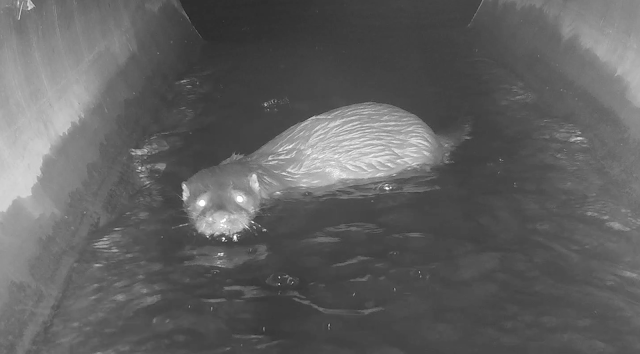Originally the other two cameras were on posts a few metres downstream but as the water subsided I moved one back to the downstream rim of the culvert. It shows how unconcerned the otters are about the cameras, usually just sniffing as they pass. And how the camera can be slow to react to a trigger, apparently not "seeing" the otter right in front of it. As the camera is 120mm (5 inches) high we can also judge the height of an otter - it is small.
Lastly I was able to re-edit a video of the mother and two cubs fishing. I posted this previously with views from only the downstream cameras.
The cubs have now left their mother so the cameras are only picking up solo otters at present. I hope the mother will produce more cubs this summer so we may see them appear on the cameras at the end of the year. I think the culvert roof camera has some potential, although I need a better way of getting it in and out. Also I need the otters to read the script and eat the frogs in the culvert. Maybe I'll try again next year.



























































